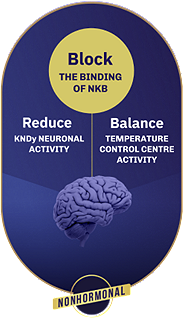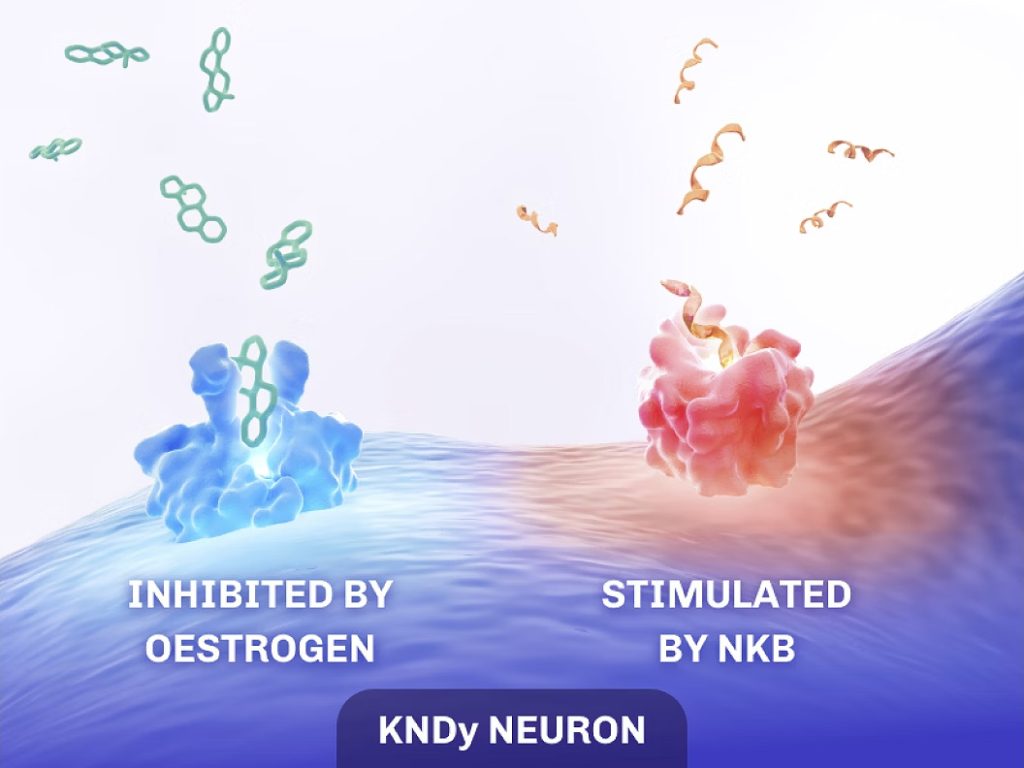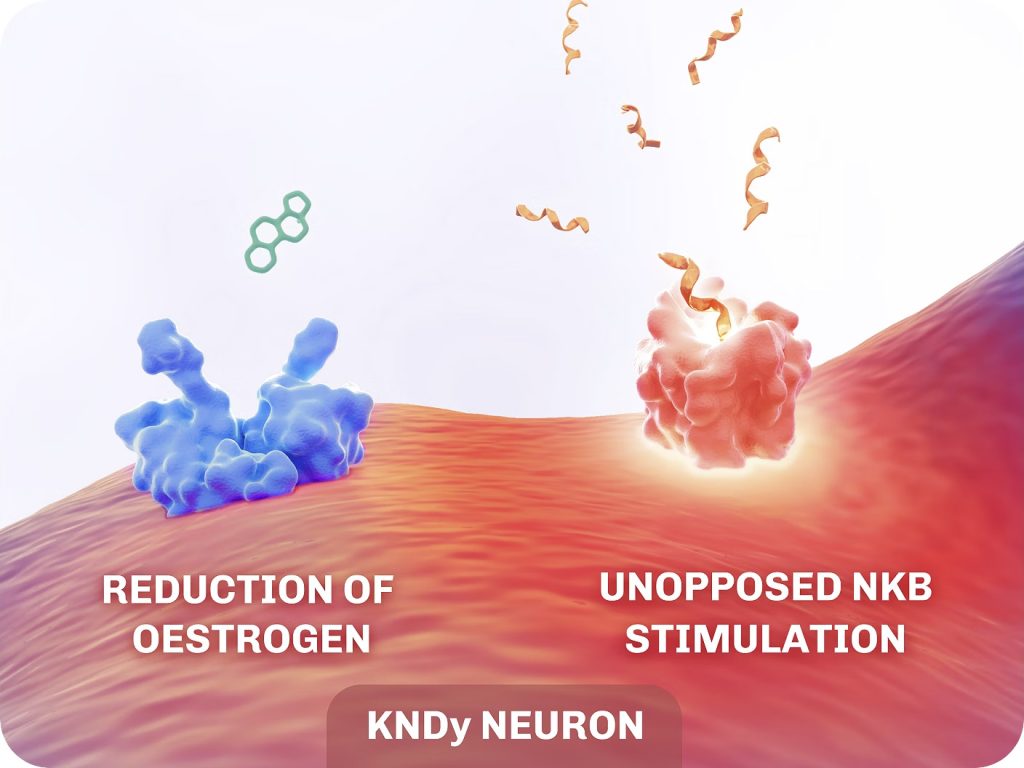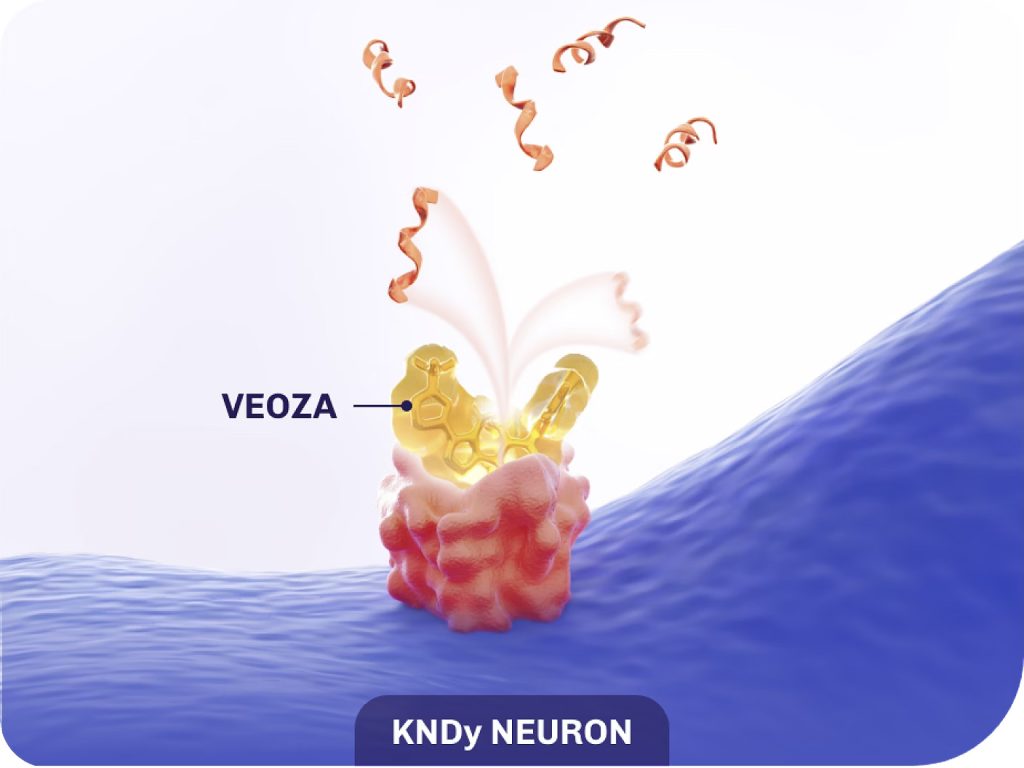
VEOZA is not a hormone.
It’s a first-in-class selective NK3 receptor antagonist that directly blocks NKB, a known trigger of VMS, from binding on the KNDy neuron1,3,4
KNDy: kisspeptin/neurokinin B/dynorphin, NK3: neurokinin 3, NKB: neurokinin B.

Watch the MOA of VEOZA

Homeostasis
KNDy neurons in the hypothalamus are inhibited by oestrogen and stimulated by the neuropeptide NKB. This balance contributes to body temperature regulation3

Menopause
Oestrogen decline during the menopause transition disrupts this balance with NKB. Unopposed, NKB signalling causes heightened KNDy neuronal activity.3 This triggers heat dissipation mechanisms, including vasodilation and sweating—VMS3

Blocking NKB to reduce heat
VEOZA selectively binds to the NK3 receptor to block NKB. This action reduces heat signalling between the temperature control centre and the body to help control hot flushes and night sweats1


RESOURCE
Share the first-in-class MOA of VEOZA1,3
Quickly reference VEOZA in your practice.
REFERENCES: 1. VEOZA [Veoza Israeli SmPC] 2. Thurston RC. Vasomotor symptoms. In: Crandall CJ, Bachman GA, Faubion SS, et al., eds. Menopause Practice: A Clinician’s Guide. 6th ed. Pepper Pike, OH: The North American Menopause Society, 2019:43-55. 3. Depypere H, Lademacher C, Siddiqui E, Fraser GL. Fezolinetant in the treatment of vasomotor symptoms associated with menopause. Expert Opin Investig Drugs 2021;30(7):681-94. 4. Jayasena CN, Comninos AN, Stefanopoulou E, et al. Neurokinin B administration induces hot flushes in women. Sci Rep (Epub) 02-16-2015.






